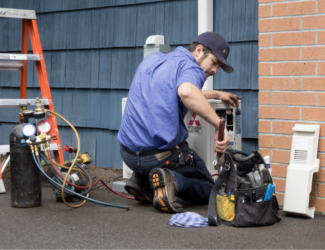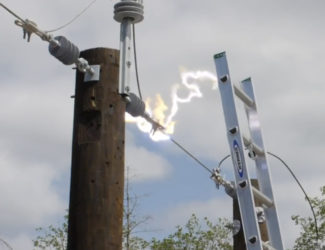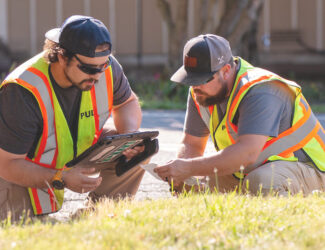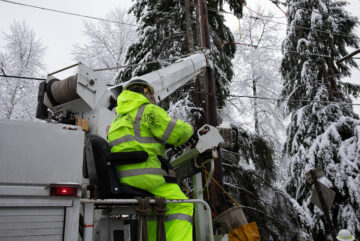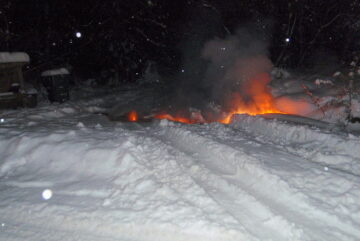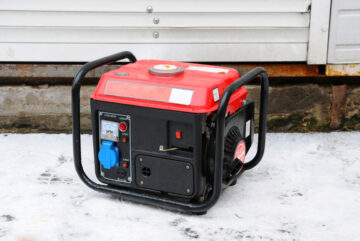
Welcome to our Outage Center!
Click here to view our outage map
Click here to report an outage
How to use our outage map:
Frequently asked questions
What do I do if a fuse blows or circuit trips?
If a fuse blows or a circuit breaker trips, it is probably due to overloading too much equipment on one circuit, defective wire, defective equipment, or a short circuit from bare wires touching. Try to find the cause and correct it.
If using fuses, pull the main switch (stand on dry board, keep extra fuses and flashlight handy, and NEVER use a penny as a substitute fuse). Replace the burned-out fuse with a new one of correct size. Turn on the main switch. If it’s a breaker, reset the handle.
If the fuse blows or the breaker trips again, recheck for the cause. If you can’t find the cause, call an electrician.
How can I stay updated on my outage?
Our outage map has the most recent information, including an outage tracker that shows you progress during an outage repair. Customers can also sign up for outage text alerts when they report their outage through our outage map or through our self-service phone system (425-783-1001). Just click the box to opt-in to outage text alerts and we’ll keep you informed on restoration progress. During storms or other significant outage events, we will provide regular regional updates on the outage map to ensure customers have the most up-to-date information.
How much detail is available about outages and when power will be restored?
The PUD’s outage map is available around the clock, 24/7, for its customers. It shows outages down to a quarter mile area. The information is in near-real-time. However, there may be instances where the posting of an outage to the map may be delayed while the utility gathers and verifies information. During major storms, with multiple widespread outages, it may take more time to assess the extent of outages throughout the PUD service area.
During major storms, Estimated Time of Restoration (ETRs) may not be available due to the large number of crews out making repairs throughout the service territory. Our first priority during major storms is repair work. But we will work to provide regular regional updates on the outage map to ensure customers have the most up-to-date information, and once a crew is assigned to an outage, we will update a customer’s ETR via text message and on the outage map.
A major power restoration challenge is that trees that have fallen on power lines or brush can limit access to restoration sites and may need to be cleared before repair work can begin. This can often be an all-day job. Often, PUD crews may not be able to estimate how long a job may take until they arrive at the site to begin clearing it for the work.
Some customers have asked why the PUD can’t contact a line crew by radio to check on when a specific street or address might have power restored. During a major storm, tens of thousands of customers might be without power. Based on the huge volume of customers affected in a major storm, it would be unrealistic to expect the PUD to be able to radio crews to handle each customer inquiry about restoration work in the field. The radio’s primary function is for the safety of the workers and any additional “traffic” on the radio would jeopardize this safety. It would also divert the PUD crew in the field from its primary focus – restoring power to customers – and dramatically slow the work of field crews.
How do you use the map?
Customers can quickly access outage information and storm updates from a PC, tablet or smart phone. By clicking on a colored outage area, the customer will be able to view an outage summary box with additional information such as cause, time of outage, number of customers impacted and Estimated Time of Restoration (ETR). ETRs may not be available during major storms.
When customers report their outage through the outage map, they can opt-in to outage text alerts. These alerts will keep customers updated on their outage, including cause, status and when they can expect power to be restored.
Each incident – or collection of outages in a certain area – can be viewed down to a quarter-mile area. The color of the outage area will depend on how many customers are out of power (e.g., 50, 500 or 3,000).
My power is out! What safety tips should I know now?
- If you have specific information about the location of a downed tree or see a power line on the ground call us immediately. Outages can be reported at 425-783-1001 or via the “report an outage” link on this page. If it’s a life-threatening situation or medical emergency, call 911.
- Try to remember what was turned on at the time the power went out and turn the switches to those items to the “off ” position. It’s especially important to turn off anything with a heating element, such as the electric range, an iron, or a toaster oven. Turning items off will prevent a fire when the power is restored.
- Unplug sensitive electronics to prevent damage from potential electrical surges. It’s not necessary to turn off hot water heaters.
- If you use a portable heater that burns liquid fuel, make sure you have a window open for ventilation.
- Don’t try to power your house by plugging a portable generator into a wall outlet. The generator will back feed electricity through the meter and out into the neighborhood, which will cause a severe safety hazard to neighbors and line workers. For more about portable generators, click here.
- Always exercise extreme caution if you use candles or oil lamps. Never leave them unattended and keep them away from furniture, drapes, and other flammable materials.
- Keep your refrigerator and freezer closed as much as possible. Food will stay safe up to 4 hours in a refrigerator and 48 hours in a full freezer/24 hours in a half-full freezer.
- Stay warm. Choose a small room with few windows as your emergency living quarters. Keep the windows, drapes, and doors closed. Dress warmly! Bundle up and don’t forget to wear a hat.
- Conserve water, especially in areas where well pumps and pumping stations may be without power.
How does the PUD communicate information during storms?
Customers can get timely information about power outages by visiting the PUD’s outage map and opting in to text message alerts. We will also work to provide regular regional updates on our outage map to ensure customers have the most up-to-date information, and once a crew is assigned to an outage, we will update a customer’s Estimated Time of Restoration (ETR) via text message and on the outage map. Customers can also call the PUD’s automated outage reporting line at 425-783-1001. During major storms, the PUD’s X (formerly known as Twitter) and facebook pages provide regular updates. The PUD also provides storm updates to local TV and radio stations.




